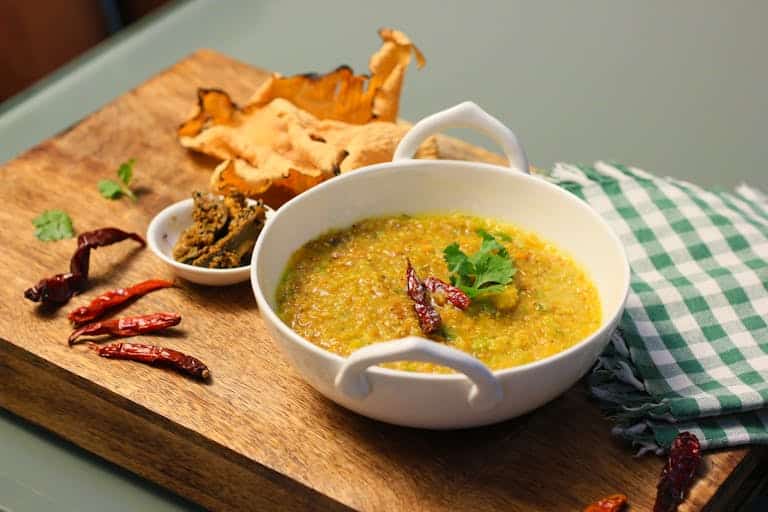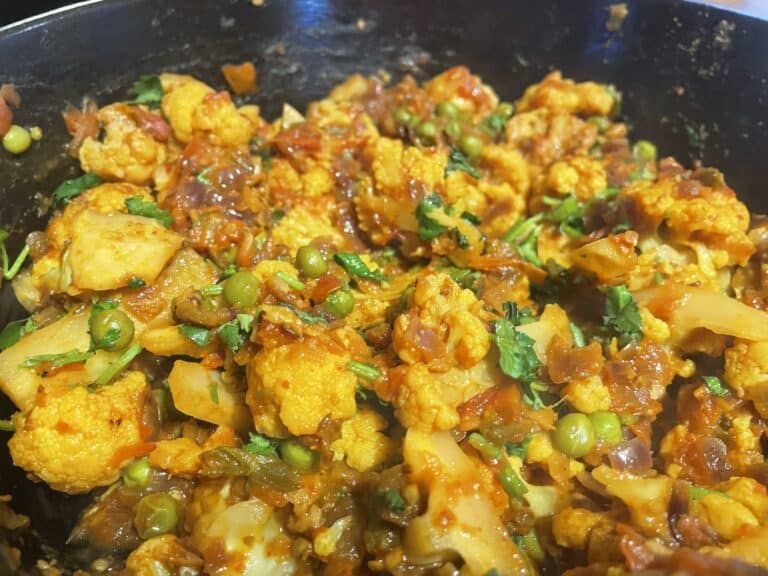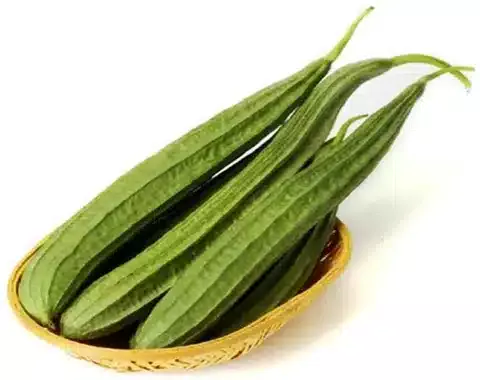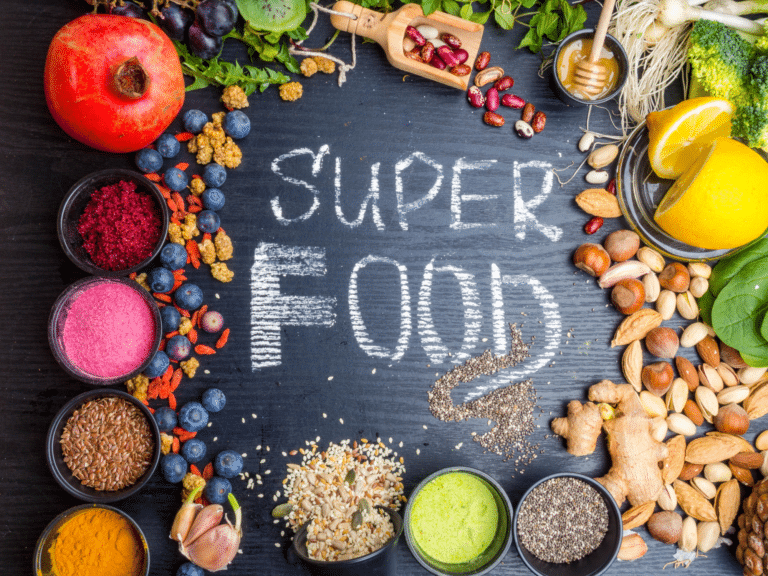If there is one dessert that instantly brings back memories of family gatherings, festivals, and the fragrance of home, it’s kheer. This classic rice pudding is more than just a sweet dish — it’s part of India’s cultural fabric, served at weddings, religious offerings, and festive meals.
In Punjab, rice kheer is cooked with slow patience, love, and generosity. Each spoonful tells a story: the creaminess of simmered milk, the delicate sweetness of sugar, the warmth of cardamom, and the crunch of golden cashews and almonds. It’s a dish that celebrates abundance and reminds us that the simplest ingredients, when treated with care, can create magic.
Why Kheer Holds a Special Place
Kheer is not just dessert — it is woven into the very fabric of Indian tradition. From temples to family kitchens, from birthdays to weddings, kheer always finds a place at the table. Here’s why this humble dish is so special:
- 🌸 A Sacred Offering – In many Indian households, the first bowl of kheer is offered to the gods. It symbolizes purity, abundance, and gratitude. Whether served during Janmashtami, Diwali, or simple pujas at home, kheer is a way of marking devotion and blessing the occasion.
- 🥛 The Alchemy of Simple Ingredients – Few dishes can transform such humble basics — rice, milk, and sugar — into something so luxurious. The slow simmering process itself is meditative, as the milk thickens and the grains soften, creating layers of richness with nothing more than time and patience.
- 💛 A Taste of Togetherness – Kheer has always been about sharing. A large pot of kheer often sits at the center of family gatherings, with everyone taking ladles full into small bowls. It brings people together, making even ordinary days feel festive.
- 🌿 A Dessert for All Seasons – In winter, it warms the body when served straight from the pot. In summer, chilled kheer feels refreshing and soothing. Its adaptability across seasons means it remains a year-round favorite.
- 🎉 Universally Loved Comfort – Across India, no matter the region, there is a version of kheer. South Indian payasam with jaggery and coconut milk, Bengali payesh fragrant with gobindo bhog rice, or Maharashtrian doodhacha godh bhaat — each has its own soul. Yet, they all carry the same essence: a simple sweet that comforts and celebrates at once.
Kheer isn’t just about taste; it’s about memory, ritual, and emotion. It connects us to our childhood kitchens, to our festivals, and to those timeless family moments when sweetness was measured in togetherness rather than spoons of sugar.
Recipe: Punjabi-Style Rice Kheer
Ingredients
- 1 liter full-cream milk
- ¼ cup basmati rice, washed & soaked for 30 minutes
- ½ cup sugar (adjust to taste)
- 4–5 green cardamom pods, lightly crushed
- 2 tbsp cashews, halved
- 2 tbsp almonds, sliced
- 1 tbsp raisins (optional)
- 1 tbsp ghee
- A few strands of saffron (optional, for richness)
- 1–2 pistachios, slivered (for garnish)
Method
- Heat ghee in a heavy-bottomed pan. Lightly roast the cashews, almonds, and raisins until golden. Remove and set aside.
- In the same pan, pour in the milk and bring it to a gentle boil.
- Add soaked rice and stir frequently on low heat to prevent sticking. Let the rice cook slowly in the milk, absorbing its richness.
- Once the rice is soft and the milk has thickened, add sugar and stir until dissolved.
- Add cardamom, saffron (if using), and half the roasted nuts. Mix gently.
- Continue simmering until the kheer reaches a creamy, luscious consistency.
- Garnish with the remaining nuts and pistachio slivers before serving.
🌟 Tips & Tricks for Perfect Kheer
- Use full-cream milk – It gives the kheer that luscious, creamy texture Punjabi households are known for.
- Low and slow is the key – The longer you let the milk simmer, the thicker and richer your kheer will taste.
- Soak the rice – This helps the grains cook evenly and prevents hard centers.
- Stir often – Especially at the bottom of the pan, to prevent burning or sticking.
- Sweetness to taste – Add sugar gradually and taste as you go; remember, as the kheer cools, it will taste sweeter.
- Flavor boosters – Try adding a drop of rose water or a pinch of nutmeg for a delightful twist.
- Make ahead – Kheer tastes even better the next day, as the flavors deepen overnight in the fridge.
Serving Suggestions
- Serve warm for cozy winter nights, or chill it in the fridge for a refreshing summer dessert.
- Pair with puris or parathas for a festive thali-style meal.
- For extra indulgence, drizzle a little rose water or sprinkle dried rose petals on top.
Kheer Across India
While this recipe is inspired by Punjab, every region in India has its own version of kheer. In South India, it’s payasam, often enriched with jaggery and coconut milk. In Bengal, it’s payesh, fragrant with gobindo bhog rice. Each variation tells the story of local produce, traditions, and flavors — yet all share the same heart: kheer is a dessert of celebration, sharing, and love.
Sweet Memories in Every Bite
Making kheer isn’t just about preparing dessert — it’s about slowing down, stirring with patience, and letting the aroma fill your home. It’s a dish that connects generations, where every spoonful carries nostalgia, blessings, and joy.
So the next time you’re craving something sweet, skip the packaged treats and simmer a pot of this Punjabi-style rice kheer. Trust me — the taste is richer than the memory itself.
Let’s Chat!
I’d love to hear from you:
- Do you like your kheer warm, chilled, or both?
- What’s your family’s twist — do you add jaggery, condensed milk, or maybe a splash of rose water?
- Have you tried making kheer with different grains (like vermicelli, millet, or quinoa)?
Share your stories, tips, or family memories in the comments below — because food tastes even sweeter when shared. 💛






